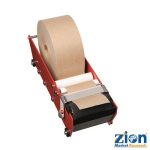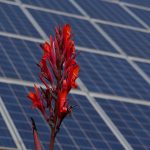Water blocking tape, also known as water-blocking cable tape, is a specialized adhesive tape designed to prevent the ingress of water or other liquids into various applications.
It is commonly used in industries such as telecommunications, construction, electrical, and automotive, where protection against moisture is crucial to ensure the longevity and functionality of components and systems.
The primary function of water blocking tape is to create a physical barrier that impedes the passage of water.
It is typically made from a combination of materials that possess hydrophobic properties, such as butyl rubber, ethylene propylene rubber, or polyurethane. These materials repel water and prevent it from seeping through the tape and reaching vulnerable areas.
Water blocking tapes come in various forms and configurations, depending on the specific application requirements. They can be found as self-amalgamating tapes, mastic tapes, semi-conductive tapes, or combinations thereof.
The choice of tape depends on factors such as the level of water exposure, temperature range, electrical conductivity requirements, and compatibility with the materials being protected.
Self-amalgamating water blocking tapes are widely used in cable and wire applications. They are highly flexible and can be stretched and wrapped around cables to form a tight seal.
These tapes have a self-fusing property, meaning that once applied, they bond to themselves and create a water-tight and permanent seal.
This characteristic makes them effective in areas where cables are exposed to water or damp environments, such as underground installations or outdoor applications.
Mastic tapes, on the other hand, are thicker and more viscous than self-amalgamating tapes. They are commonly used for sealing cable joints and connections, as well as providing moisture protection for electrical components.
Mastic tapes are applied in layers, with each layer forming a barrier against water infiltration. The high viscosity of the mastic allows it to conform to irregular shapes and fill voids, ensuring a complete seal and minimizing the risk of water penetration.
Semi-conductive water blocking tape are specifically designed for high-voltage applications, where electrical conductivity is a critical requirement.
These tapes contain conductive materials, such as carbon black, that allow the dissipation of electrical charges and prevent the accumulation of static electricity.
They provide both electrical insulation and water-blocking capabilities, making them suitable for applications such as power cables and electrical grounding systems.
The installation process of water blocking tape varies depending on the type of tape being used and the application requirements. However, some general guidelines apply.
Before applying the tape, the surface must be clean, dry, and free from any contaminants that could compromise the adhesion. In the case of cables or wires, the tape is typically wrapped tightly and evenly around the exposed area, ensuring full coverage and overlap.
In cable joints or connections, multiple layers of mastic tape may be applied, with each layer slightly overlapping the previous one to create a robust seal.
The effectiveness of water blocking tape in preventing water penetration is influenced by various factors, such as the quality of the tape, the installation technique, and the environmental conditions to which it is exposed.
Proper selection of the tape type, considering factors like temperature range, chemical resistance, and UV stability, is crucial to ensure optimal performance.
Water blocking tape provides several advantages beyond its primary function of preventing water ingress. It also offers resistance against other environmental factors, such as dust, moisture, and corrosion.
By creating a barrier against these elements, it helps to extend the lifespan of components and systems, reducing the need for frequent repairs or replacements.
Additionally, water blocking tape can contribute to improved safety by minimizing the risk of electrical short circuits, malfunctions, or failures that can arise from water-related damage.
In conclusion, water blocking tape is a specialized adhesive tape designed to prevent water penetration in various applications.
By creating a physical barrier, it inhibits the ingress of water and other liquids, protecting sensitive components and systems from moisture-related damage.
With its versatility, flexibility, and compatibility with different materials, water blocking tape plays a crucial role in ensuring the longevity and reliability of cables, electrical connections, and other vulnerable areas.
Proper selection, installation, and maintenance of water blocking tape are essential for achieving optimal performance and protection against water infiltration.




